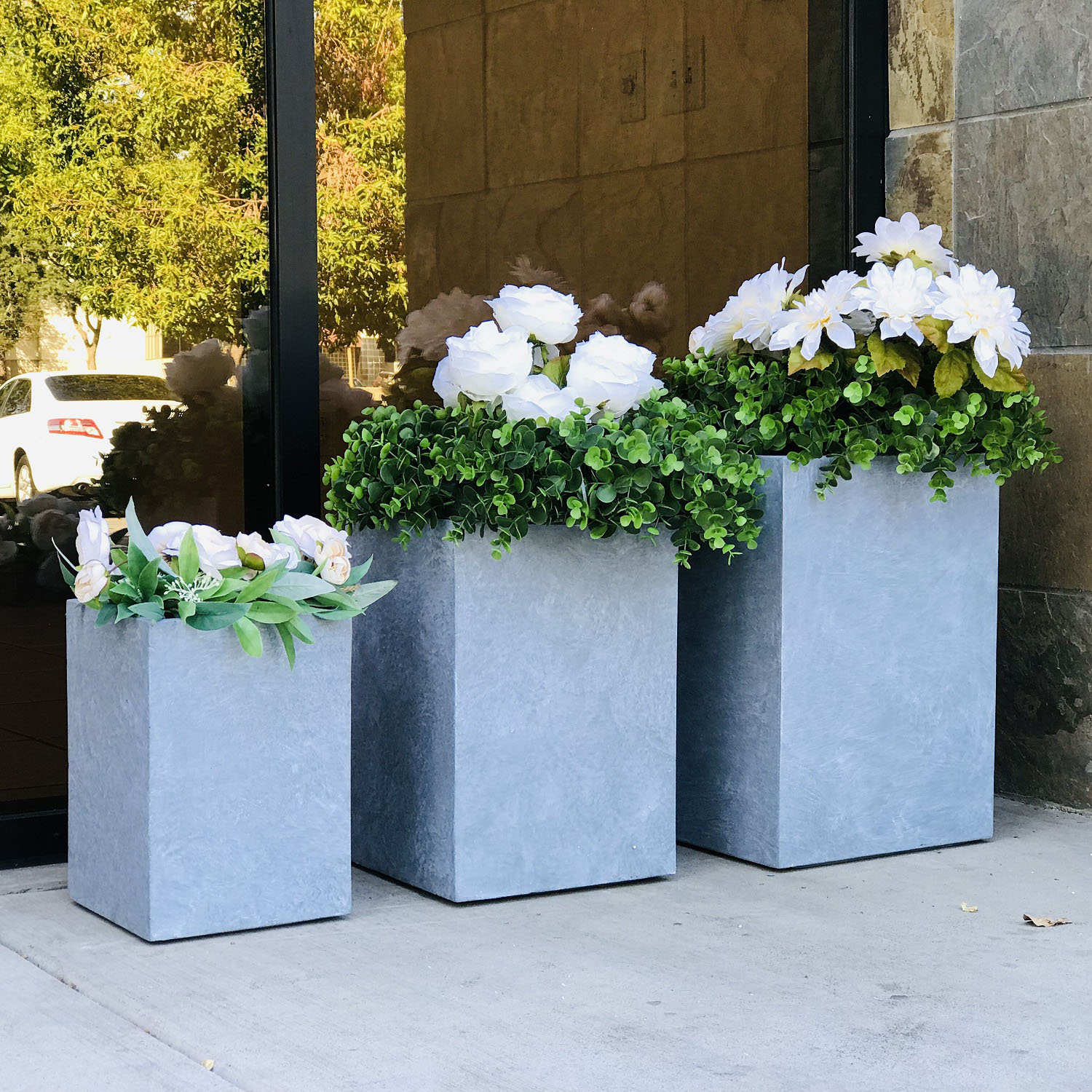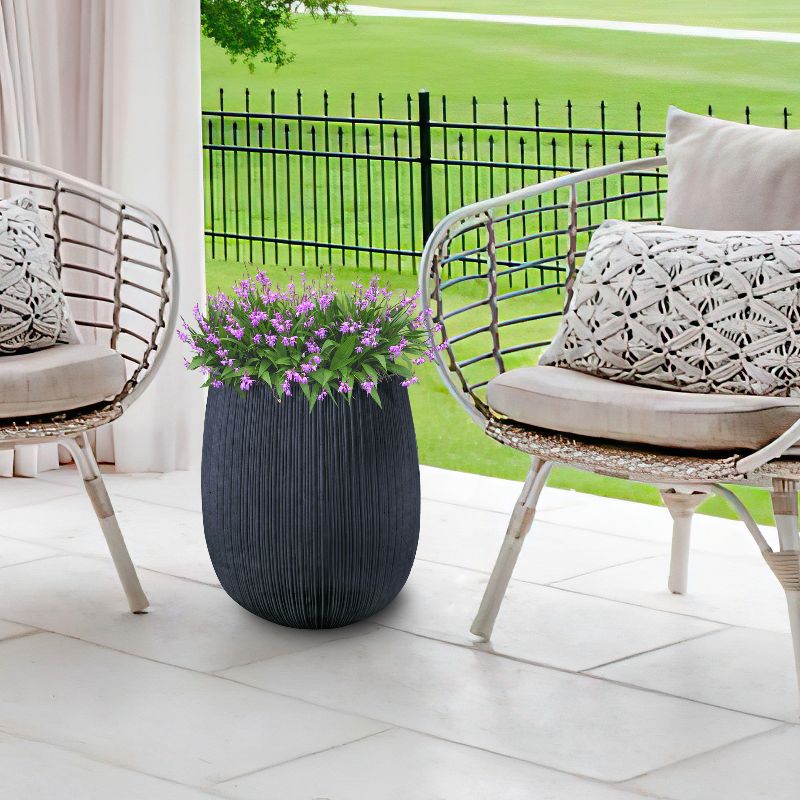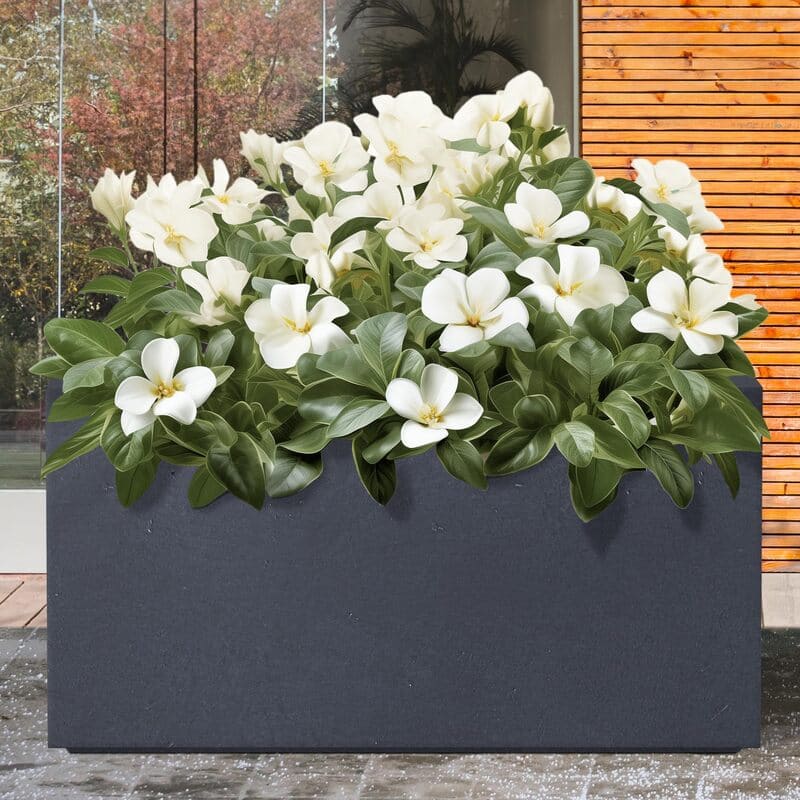In recent years, the preferences of gardeners and landscapers have undergone significant changes. An increasing number of them are choosing lightweight concrete planters, as they offer numerous practical and aesthetic benefits. These modern planters are rapidly becoming the preferred choice over traditional fiber clay planters, and there are persuasive reasons for this shift.
Let's explore the various factors contributing to the growing popularity of lightweight concrete planters in the fields of gardening and landscaping below.
Durability and Longevity
One of the most outstanding features of lightweight concrete planters is their exceptional durability. Made from a special mixture of cement, aggregates, and additives, these planters are engineered to endure harsh weather conditions. Unlike fiber clay planters, lightweight concrete ones do not become brittle in freezing temperatures.
They retain their strength and visual appeal for many years. This remarkable durability makes them suitable for a wide range of uses, whether employed indoors to enhance decoration or outdoors to beautify gardens and patios.
Aesthetic Appeal.
In addition to their durability, lightweight concrete planters present a contemporary and elegant look that seamlessly blends with various design aesthetics. Their natural, stone-like finish provides a timeless appearance that can enhance the visual charm of any garden, patio, or interior space.
While fiber clay planters undoubtedly have their own unique beauty, they often fall short in delivering the authentic, high-quality finish that concrete planters offer. The sleek contours and minimalist design of lightweight concrete planters can enhance the overall atmosphere of any environment, making them a favored option among design-savvy consumers.
Weight and Portability
Despite their robust and sturdy look, lightweight concrete planters are surprisingly easy to transport and rearrange. Innovations in material science have enabled the creation of lighter concrete planters without sacrificing their strength and durability. This groundbreaking approach makes them significantly more manageable than traditional fiber clay planters, which can be heavy and challenging to move once filled with soil and plants.
The convenience of mobility allows gardeners and landscapers to experiment with various layouts and designs, ensuring that their outdoor spaces remain dynamic and visually engaging.
Environmental Impact.
For environmentally conscious consumers, lightweight concrete planters often represent a more sustainable choice. The manufacturing process of fiber clay planters typically involves synthetic materials and resins, which can negatively impact the environment.
In contrast, many producers of lightweight concrete planters emphasize sustainable practices and materials, greatly minimizing their carbon footprint. By selecting lightweight concrete planters, consumers can take pride in their purchase, knowing they are making a more responsible decision for the planet.
Insulation and Plant Health
Another notable benefit of lightweight concrete planters is their thermal properties, which provide excellent insulation for plant roots. This insulation helps shield plants from extreme temperature variations, which is vital for maintaining overall plant health. Consistent root temperatures support optimal growth and development, allowing plants to flourish in diverse conditions.
In comparison, fiber clay planters may not deliver the same level of protection, potentially causing stress for plants during periods of extreme heat or cold. By opting for lightweight concrete planters, gardeners can create a more stable environment for their plants, fostering healthier growth and vibrant blooms.
Cost-Effectiveness
Although the initial cost of lightweight concrete planters may be higher than that of fiber clay planters, their long-lasting durability often results in significant savings over time. Homeowners and businesses can avoid the frequent replacements and repairs typically associated with fiber clay planters, making lightweight concrete a more economical option in the long run. The longevity of these planters ensures they can endure the test of time, providing both value and beauty to indoor and outdoor spaces for many years.
In summary, more gardeners and landscapers are choosing lightweight concrete planters. This is because they are durable and look good. They are also easy to move and have environmental benefits. Additionally, they provide good insulation and are cost-effective.
As more people want to improve their indoor and outdoor spaces, lightweight concrete planters will likely stay popular. They offer a great mix of style and usefulness. Whether you are an experienced gardener or a beginner aiming to beautify your home, lightweight concrete planters present a versatile and attractive solution that is sure to impress.



